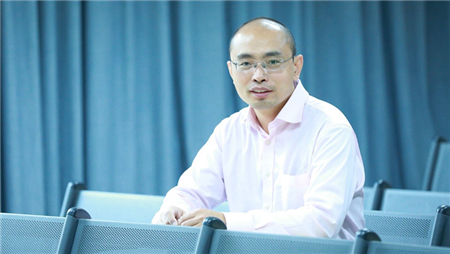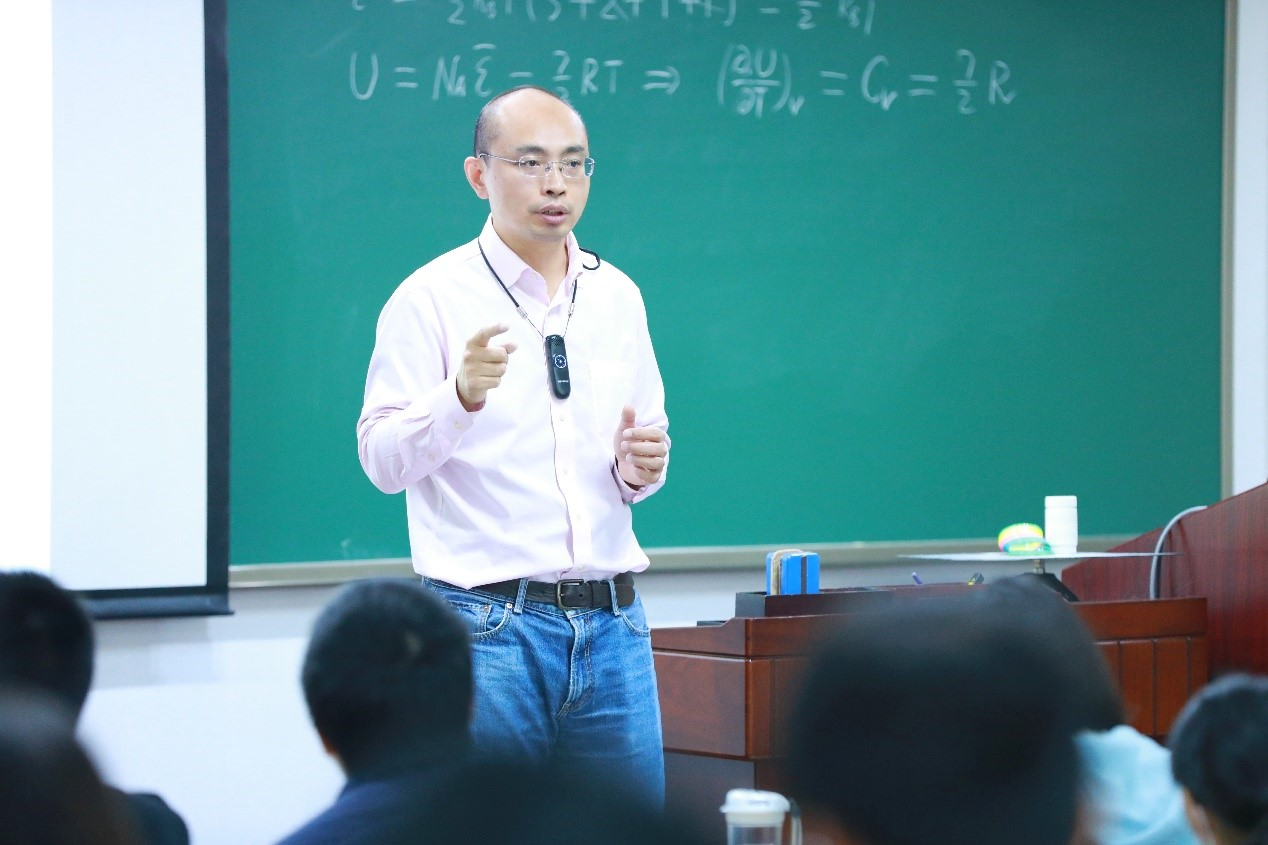Peking University, February 1, 2021: Associate Professor Mu Liangzhu has been referred to as “Sorcerer Mu” among his students for as long as he could remember. This quirky nickname has an interesting origin. It all started when he lit up a fluorescent lamp seemingly with his bare hands during an electromagnetic experiment in class, and this magical scene sent ripples of amazement among students who later gave him the alias. Following his nomination by the Peking University School of Physics, Professor Mu received the 2020 Outstanding Teaching Award on August 24th for his excellent teaching tactics and contributions to physics education at Peking University. To discover what goes on behind his teaching methods and personal stories, we had a chat with Professor Mu about the motivation, planning, and expectations of his life and work.

Mu Liangzhu
Studying and Teaching Physics: Facing Choices Two Times in Life
“Choosing physics as my major and later as my career was, in fact, coincidental”, said Professor Mu, as he recounted the story of his college application after taking the Gaokao. Having a broad interest in the pure sciences, Mu chose physics – over mathematics – as his first choice by chance. However, some challenges accompanied this choice. For instance, while studying physics during his undergraduate years, he was frustrated to find that although he could score high in exams, he sometimes failed to understand the essence of physics. Nonetheless, intense studying and self-reflection paved the way for a renewed curiosity and more precise understanding of the field. His curious personality propelled him to later study theoretical physics as a Ph.D. student.
Again, after his doctorate, he faced a dilemma: to apply for a postdoc position and continue conducting scientific research, or teach physics at the Teaching Center for General Physics, Peking University, which was coincidentally hiring lecturers at the time. Mu found research as a career which emphasized self-actualization, while teaching physics was founded on the principles of serving society and helping students learn and accomplish their dreams. As a gifted scholar endowed with far-reaching responsibilities of serving his country, Mu chose the path of educating his students, and this commitment has not waned ever since.

ETA Physical Cognition Model
Professor Mu has become one of the most popular teachers at Peking University. When asked about the secret of his success in teaching, he explained that it was crucial to teach utilizing the tendency of how humans recognize objects and phenomena. This idea was drawn from his experiences. During his physics studies, Mu gradually standardized a systematic approach to understanding the world as he collected positive feedback from himself regarding his comprehension of physics. He names it the “ETA Physical Cognition model”, where ETA stands for experimental, theoretical and applying physics. When he had just become a lecturer, Mu devoted substantial time and efforts to preparing systematically for his courses. However, several students faced difficulties trying to understand him. Troubled by this, he brainstormed different teaching patterns until he realized he could teach from the perspective of the ETA model.
During our interview, Mu illustrated this model with a classic example in the history of science. He narrated how people, in ancient times, found that some celestial bodies (now known as stars) were merely rotating around the Earth while others (now known as planets) had far more complex motions. To figure out the causes of the sophisticated moving patterns of planets, astronomers like Tycho began observing and recording the movements of planets day-by-day. With this enormous data set collected by Tycho at hand, another famous astronomer Kepler, one of Tycho’s students, strived to search for the relations behind this experimental data. This curiosity gave rise to Kepler’s law of planetary motion. According to Professor Mu, this string of events demonstrated a process of experimental cognition, where empirical rules were generalized with clarity without focusing on the underlying mechanisms.
Soon, Professor Mu took notice of the model’s practicality among students from diverse backgrounds, including those majoring in physics, or science students from other subjects, or even art students who were interested in physics. He has been using the ETA physical teaching method on courses like thermal physics and demonstration physics. Demonstration physics was a liberal art course mainly for art students. Mu observed that although the students generally have less scientific knowledge, they share a similar cognition pattern with science students. By conducting intriguing experiments in class, Mu was able to have his students understand the basic physical concepts without cumbersome derivations of formulae using intricate mathematics.

Comprehensive Instruction Classes
In addition to teaching classes, Professor Mu was also a member of the Comprehensive Instruction Committee in the School of Physics. This initiative was similar to office hours in foreign universities which allowed teachers and students to converse face-to-face on any issues, whether it be academic or personal. Every year, he instructed more than one hundred students in this class. Professor Mu briefly narrated a situation during one of the sessions involving two students who had failed a few courses and were on the verge of not graduating. “After they told me their situation, I asked several questions, and from the answers they provided, I pointed out foibles in their cognition models and guided them to learn following the ETA model,” the Professor stated with a keen look on his face. Equipped with a clearer view of learning, these two students soon regained confidence and gained an interest in physics. As of today, they are both Ph.D. students in physics.
Mu’s View on “Involution” from ETA Cognition Model
Professor Mu gives credit to the ETA cognition model for his success in education. He believes this model is not just limited to physics, but it can also be extended to every aspect of life. When talking about “involution”, a phenomenon that refers to “cut-throat competition” in colleges, Mu observed that it was resulted from a simple cognition model which leads many to become short-sighted and only recognize the mainstream form of success. Many were taught to simply follow the same path of someone successful, and later on found themselves trapped in an infinite loop with numerous boundaries. However, as Professor Mu noted, “ETA cognition model allows people to think open-mindedly. When you know how to succeed in one way, you can apply the principles you learn to different areas or even brand-new areas, rather than confining yourself to places which are already overcrowded.”
It is his joy to continue teaching new generations of scientists who has an interest in physics, and he hopes to share his ETA model with countless students to come, enabling each and every one of them to reach their full academic potential.